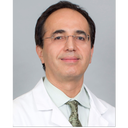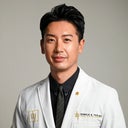how many units of botox might need a 50 years old woman for forehead and eye area (crow's feet) and if that together is consider one area or two area. Thank you
Answers (24)
From board-certified doctors and trusted medical professionals
Dr. Nick Slenkovich, MD

Dr. Nick Slenkovich, MD
Board Certified Plastic Surgeon
Answer
Dr. Ali Sajjadian, MD, FACS

Dr. Ali Sajjadian, MD, FACS
Board Certified Facial Plastic Surgeon
Answer
Dr. Benjamin Caughlin, MD, FACS

Dr. Benjamin Caughlin, MD, FACS
Board Certified Facial Plastic Surgeon
Answer
Dr. Peter Lee, MD, FACS

Dr. Peter Lee, MD, FACS
Board Certified Plastic Surgeon
Answer
Dr. Jason Emer, MD

Dr. Jason Emer, MD
Dermatologic Surgeon, Board Certified in Dermatology
Answer
Dr. Ramiro Morales, Jr., MD

Dr. Ramiro Morales, Jr., MD
Board Certified Plastic Surgeon
Answer
Dr. Thomas Trevisani, MD

Dr. Thomas Trevisani, MD
Board Certified Plastic Surgeon
Answer
Dr. Itzhak Nir, MD, FACS

Dr. Itzhak Nir, MD, FACS
Board Certified Plastic Surgeon
Answer
Dr. Michael I. Echavez, MD

Dr. Michael I. Echavez, MD
Board Certified Facial Plastic Surgeon
Answer
Dr. Donald B. Yoo, MD, FACS

Dr. Donald B. Yoo, MD, FACS
Board Certified Facial Plastic Surgeon
Answer
More Botox Questions
See all Botox Q&AWE SEND PRETTY
EMAILS
What’s trending? Who’s turning heads? Which TikTok myths need busting? We’ve got you. No fluff, no gatekeeping—just real talk. Get our free, unfiltered newsletter.